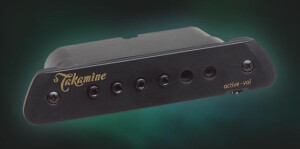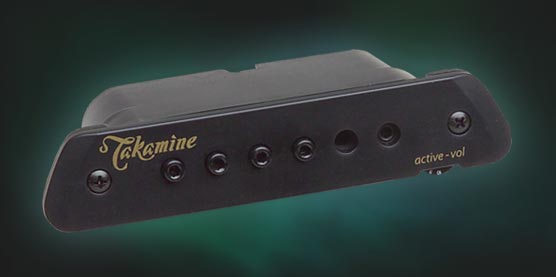View other reviews for this product:
Published on 01/28/10 at 01:08
Value For Money :
Poor
This is the exact copy of the LR BAGGS M1 with a more significant: we can either use it in either active or passive. It is easy to install PROVIDED TO HAVE A DIAMETER OF FLANGE ENOUGH! Doing so be careful when buying as the size of your rose is sufficient. LR BAGGS gives a minimum diameter of 3.5 inches (slightly less than 9 cm I think), which still leaves margin. If it gets stuck, you can always remove completely the legs into position more easily and recover from the microphone securely in place. But coming to what interests us: the sound. Everything here depends on what you're gonna plug the beast. Directly into a table, not bad, by setting a bit with the equalizer. Found sound "acoustic" relatively convincing (but not transcendent either) but with highs sometimes a little too metallic. But here it's still a bit lacking of magnetic pickups. Connected through a good acoustic amp (Zoom A2 or LR BAGGS Para Acoustic DI) or an acoustic amp: you get something really good. By correcting a little midrange and treble is almost perfect when it remains in reasonable volumes. The sound is relatively accurate but very airy in comparison to a piezo system. The role of the second coil "suspended" in the first, captures well the natural resonance of the drum, sound source that is sorely lacking in conventional microphones rosette (except Fishman Rare Earth Blend but still expensive). At higher volumes, things get a little complicated by amplifying certain frequencies and sometimes nasty fall in tune. We found a little (but to a lesser extent) the same defect as a condenser microphone placed on stage in front of the guitar, which leaves us actually think that the characteristic "sound" of the microphone closer to making this type her than any other system. This "failure" seems to correct relatively efficiently by using a phase inverter (often found on acoustic amps or preamps like good Para Acoustic DI). I will soon live trials and I will say again what we get in these conditions. In conclusion, to 169 € from my favorite vendor (even online!) This microphone is a very good deal for those who want a little bit back a semblance of natural acoustic sound of his favorite guitar, and enjoy a montage " easy "and transferable to any other guitar. It remains in all cases MUCH less expensive than the Fishman Rare Earth Blend (which I have not tried but which borders with the 400 € !!!), by roughly the same work (at least in its conception , that is to say, trying to capture the sound a bit of cash to restore some natural). Please note, however, do not expect to get sound in a home studio use. If it can be an interesting addition to miking acoustic recording, it will never replace a good static in front. Its primary role is to be used within a live amplifier. It is just by plugging cons where it is necessary and, if possible, use a good preamp. I will do further testing with the Para Acoustic DI I found (on the net this time) to not very expensive and re submit your review very soon.
Edit of 13/02/2010: a few concerns that I had had a high volume = because the microphone was positioned incorrectly! Let me explain: I install it until then as "stubborn" by the collar and I noticed that one of the "ears" clamping was "horse" inside between the table and a small piece of wooden dam of the table (thus under the table). The microphone was so badly wedged and glued to the table! I've been more careful afterwards and the result is terrible, even at very high volume!
Edit of 13/02/2010: a few concerns that I had had a high volume = because the microphone was positioned incorrectly! Let me explain: I install it until then as "stubborn" by the collar and I noticed that one of the "ears" clamping was "horse" inside between the table and a small piece of wooden dam of the table (thus under the table). The microphone was so badly wedged and glued to the table! I've been more careful afterwards and the result is terrible, even at very high volume!



